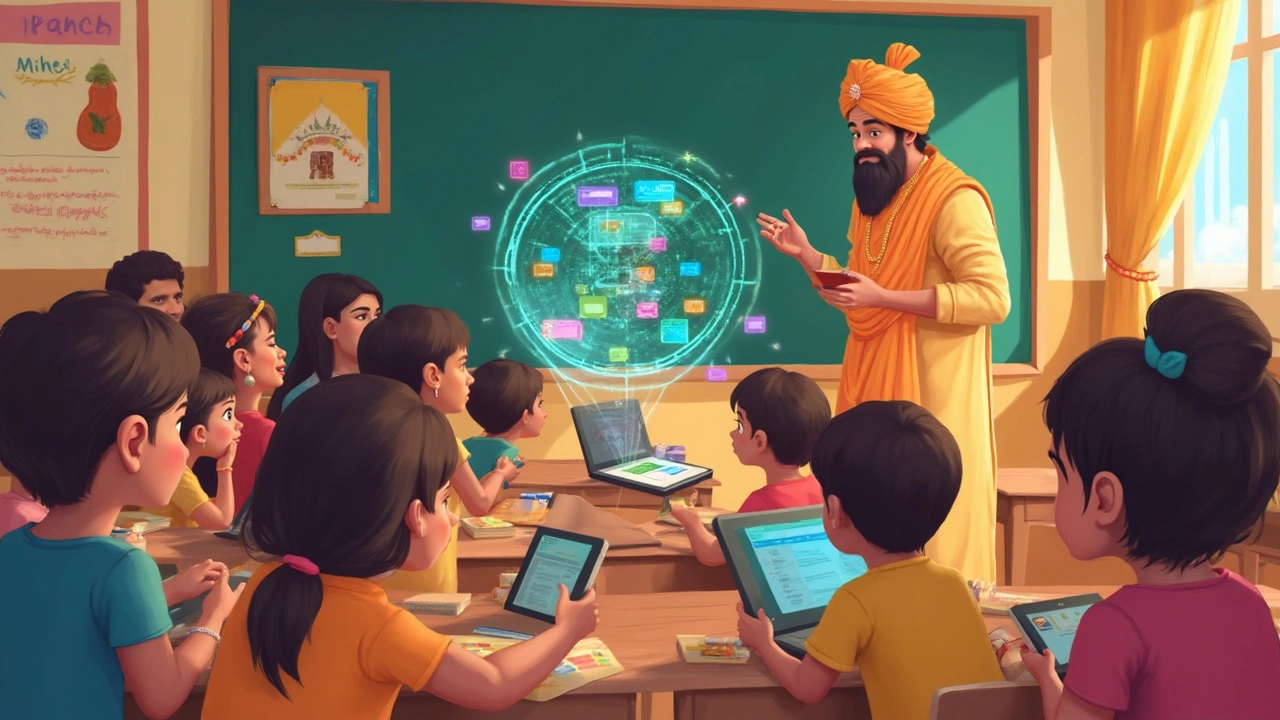Ever thought about how much Google has impacted education? It's fascinating how their free resources and tools have become staples in classrooms and virtual learning setups worldwide. Google might not label itself as an e-learning platform, but it sure acts like one!
Think about it—tools like Google Classroom have made remote teaching smoother. Teachers can assign work, give feedback, and hold classes without needing expensive software. And then there's YouTube, which is a goldmine for educational content. Not to mention Google Meet for virtual classes and Hangouts for group projects. Google's got it all covered!
But hey, why should we settle for just using them as they are? There are tips and tricks to make the most out of these tools. From organizing your Google Drive for better efficiency to using extensions that integrate seamlessly with their services, the possibilities are endless.
- Google's Relevant Tools
- Advantages for Learners and Educators
- Practical Tips for Using Google
- The Future of Google in E-Learning
Google's Relevant Tools
When we talk about Google and e-learning, a few key tools often come up as game-changers in the education sector. Let's dive into these tools and see how they make online education accessible and efficient.
Google Classroom
Google Classroom is a big one. It's free, easy to use, and a time-saver. Teachers can create assignments, give feedback, and track students’ progress, all in one place. The best part? Students can access it from anywhere, whether they're at home or on the go.
YouTube
We can't forget about YouTube, a platform that's been a go-to for free educational content. Whether it's learning how to solve algebraic equations or understanding climate change, there's a video for it. Plus, the visual element really helps when tackling complex topics.
Google Meet
Google Meet comes in handy for real-time virtual classes and meetings. It's straightforward and integrates neatly with other Google tools, making it a favorite in remote learning settings. Educators can share their screens, record sessions, and interact with students just like in physical classrooms.
Google Drive
Storage can be an issue with digital learning materials, but Google Drive makes it a non-issue. It offers ample free space where both teachers and students can store and share documents, presentations, and other resources effortlessly.
Google Forms
Lastly, Google Forms is perfect for creating surveys and quizzes. Teachers can gather feedback, test comprehension, and even conduct exams easily. Responses are collected in real-time, and the data can be analyzed to improve teaching strategies.
Here's a quick overview of how these tools stack up:
| Tool | Main Function | User-Friendly |
|---|---|---|
| Google Classroom | Assignment Management | Yes |
| YouTube | Video Content | Yes |
| Google Meet | Virtual Meetings | Yes |
| Google Drive | Cloud Storage | Yes |
| Google Forms | Surveys/Quizzes | Yes |
These tools highlight how Google effectively supports digital learning environments. It's no wonder more educators worldwide are integrating them into their teaching methodologies.
Advantages for Learners and Educators
Google's suite of tools has brought a lot to the table for both students and teachers. It's streamlined a lot of what used to be complicated, clunky processes.
Accessibility and Affordability
One of the most significant advantages is accessibility. With most of Google's tools being free, anyone with an internet connection can access them. This opens doors for learners who otherwise might not have access to expensive educational resources.
Integration and Collaboration
Then there's integration, which drastically boosts collaboration. Google Classroom links smoothly with other Google services like Docs, Sheets, and Drive. This integration means teachers can create assignments, share materials, and receive homework all through a single platform. No more scrambling to find scattered emails or misplaced assignments.
Flexibility and Ease of Use
The user-friendly nature of these tools can't be overstated. You don’t need to be a tech wizard to navigate Google’s ecosystem. Plus, as everything is cloud-based, both teachers and students can work on projects anywhere, anytime, which is perfect for today's flexible learning environments.
Real-Time Feedback
Real-time feedback is another game changer. Through tools like Google Docs and Google Sheets, teachers can provide instant comments to students, helping them to make immediate improvements rather than waiting days for a response.
| Tool | Purpose | Benefit |
|---|---|---|
| Google Classroom | Learning Management | Organized Distribution of Assignments |
| Google Meet | Virtual Meetings | Face-to-Face Interaction |
| YouTube | Content Hosting | Vast Educational Resources |
For anyone diving into the world of online education, harnessing the power of Google can make the whole process smoother and more efficient. Whether you're prepping lessons, conducting classes, or engaging students, Google's tools offer vast potential to elevate learning experiences.

Practical Tips for Using Google
Feeling overwhelmed with digital learning tools? No worries, Google’s got heaps to offer, and it doesn't take much to get the hang of them. Here are some practical tips to better utilize Google as an e-learning ally.
Tip 1: Organize with Google Drive
A little bit of organization goes a long way. Use Google Drive to keep your class materials in check. Create folders for each subject or project, and share them with students or fellow teachers. Need to collaborate? Grant editing rights or leave comments in real-time! It’s like having your classroom filing cabinet online.
Tip 2: Master Google Classroom
Google Classroom isn’t just for assigning homework. Use the Announcements feature to keep everyone in the loop. To make your lessons pop, attach videos from YouTube or add Google Doc worksheets directly. Pro tip: Try out the different types of assignments—questions for group discussions, quizzes for self-assessment—mix it up!
Tip 3: Engage with Google Meet
Virtual face-to-face time is crucial. Use Google Meet for scheduled lessons or surprise pop quizzes. Spice up sessions with features like screen sharing or breakout rooms for group work. Don’t forget about the chat function to answer queries on the fly.
"The future of education is technology-led, and Google is at the forefront with its seamless integration tools," says John Doe, a renowned educational technologist.
Tip 4: Utilize Google Forms for Feedback
Keep your finger on the pulse with Google Forms. Use them for collecting feedback from students or conducting quick surveys. Simple, yet effective—form responses automatically collate in Sheets for easy analysis.
Tip 5: Leverage Extensions and Add-Ons
The Google ecosystem thrives on customization. Explore extensions and add-ons like Kami for annotation or Pear Deck for interactive slides. These are game-changers, allowing you to turn static lessons into engaging experiences.
Triple your productivity by combining these tips with seamless integration across your devices. Remember, with a bit of practice, Google can really lighten your e-learning load!
The Future of Google in E-Learning
As we look ahead, the potential for Google in the realm of e-learning is immense. Google's innovation track record and its existing educational tools hint at exciting developments.
AI-Powered Learning Tools
Google's advancements in artificial intelligence could revolutionize online learning. Imagine personalized education experiences with real-time feedback. AI could help tailor lessons to fit individual student needs, make grading more efficient, and provide insights for teachers to improve their methods.
Virtual Reality (VR) and Augmented Reality (AR) Integration
While still in its early stages, VR and AR tech from Google could change how we perceive learning environments. Imagine virtual field trips to historical sites or interactive science experiments from your living room. This tech can make learning more engaging and immersive.
Expanding Educational Content on YouTube
YouTube already hosts a massive library of educational content. With more educators and creators uploading videos, Google's platform is set to become an even more vital educational resource. There might even be certifications or structured courses built on YouTube's capabilities.
Seamless Platform Integration
As cloud-based tools become the norm, Google's suite could evolve to offer seamless integration with other platforms. Schools and universities might adopt comprehensive solutions where everything from video conferencing to grading systems is under one roof.
Ultimately, Google's continued focus on accessibility—offering free or low-cost educational tools—means that their impact on global online platform education is only going to grow. Staying updated with these changes could benefit both educators and learners tremendously.









0 Comments